| << Chapter < Page | Chapter >> Page > |
In Grade 3 learners continue to expand their vocabulary by listening and reading a variety of texts such as poem, stories, riddles and doing word puzzles.
These modules consolidate and revise the vocabulary and phonics introduced in Grade 2. More opportunities are given for written work producing longer texts of more varied kinds. Learners should not be afraid to make mistakes as the building of confidence and fluency should take priority above perfect written work.
Time scheduled for the modules
All learners should work through all eight modules as the phonics and spelling requirements are spread over these modules. The educator should however allow learners to complete them at their own pace namely ± two modules per term.
The topic “Story time” continues with that of “Percy the porcupine” who tries to find a friend and cannot understand why the farm animals will not be his friends.
This module is integrated with the learning area, Mathematics and explores the possibility of shapes in the story.
Polite forms of greeting are repeatedly used.
Activities to learn the vocabulary of animals and their babies, and noises of animals have been designed.
Integration of themes
Farm animals are important to Man and should be cared for.
The feelings of others are important and learners must learn to be sensitive to them.
| A hen | |
| A cow | |
| A sheep |

| A cock | |
| A dog | |
| A horse | |
| A cat |

| LO 3.8.1 | LO 4.3 |
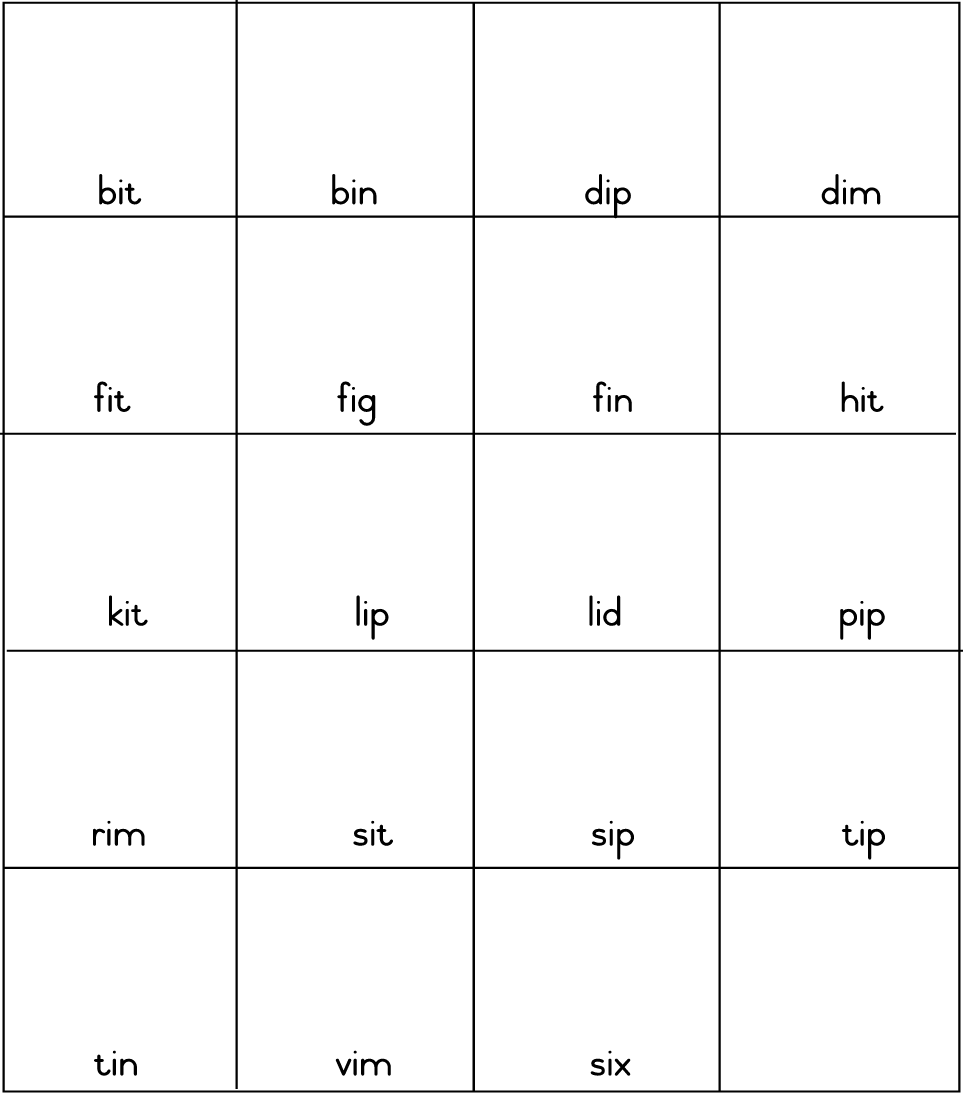
| LO 4.3 |
Farmer Brown has many sheep. Sheep give us wool. Thank you, Sheep, for the wool.

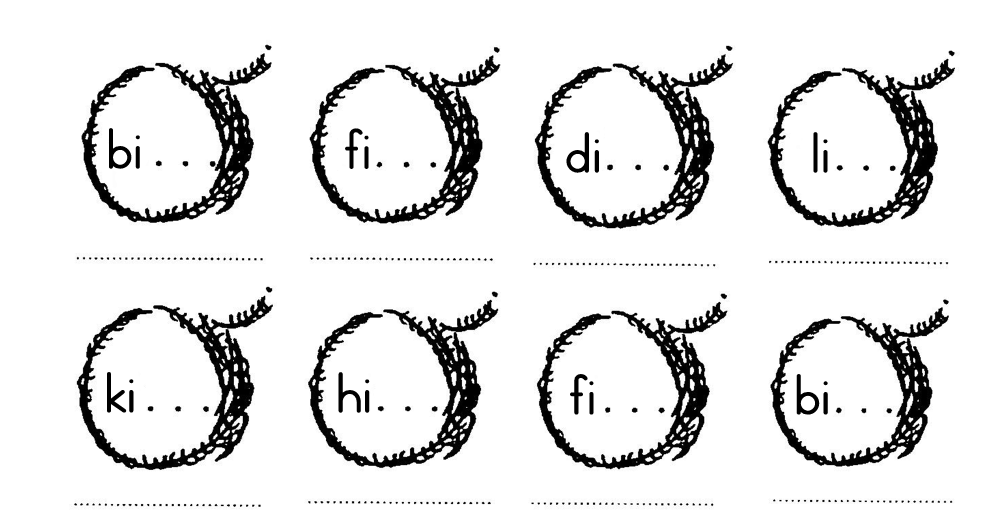
| LO 4.3 |

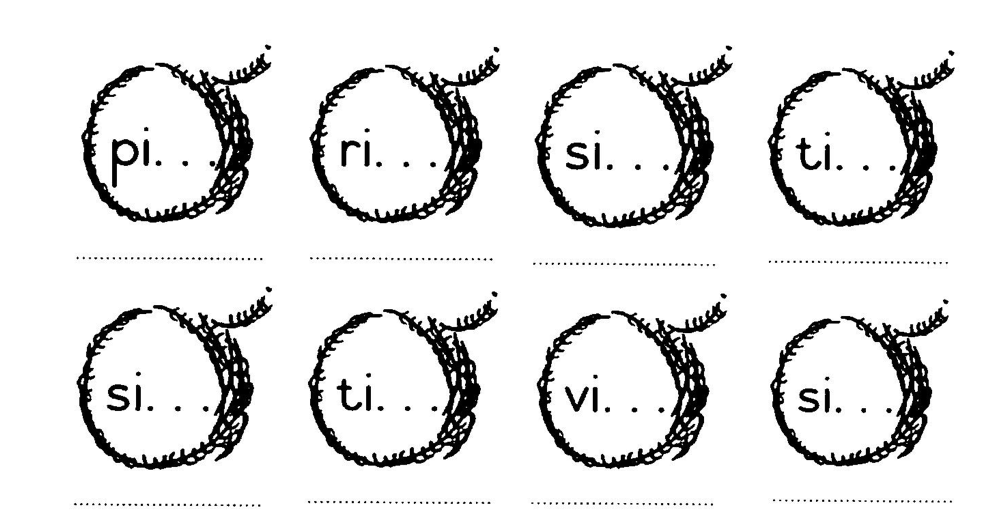
| LO 4.3 |
a or e or i
1. D__d m__t the m_n.
2. I like j__m and h__m.
3. The c__t s__t on the m__t.
4. I have s__x c__ts.
5. The f__g is in the b__g.
6. My p__n is r__d.
7. I go to b__d.
8. The r__t is in the t__n.
| LO 1.5.1 |
I’m so clever!
As clever as can be!
I can write –
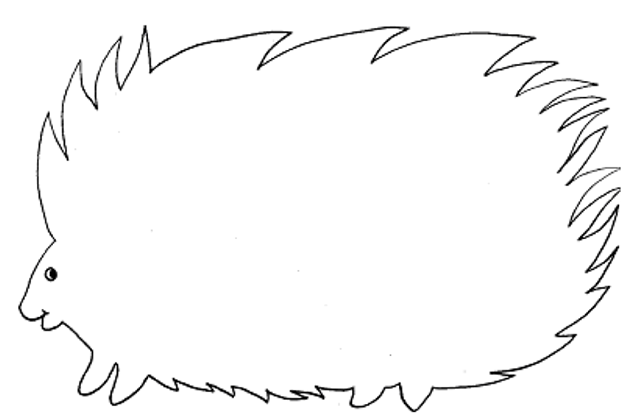
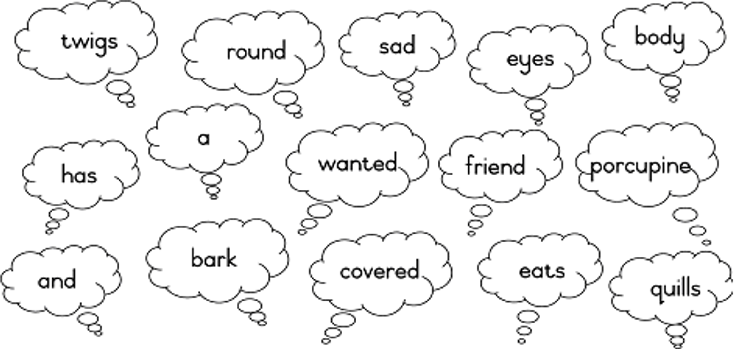
| LO 3.3.1 | LO 4.6 | LO 4.7 |
Learning Outcome 1: LISTENING : The learner will be able to listen for information and enjoyment, and respond appropriately and critically in a wide range of situations.
Assessment Standard 1.5: We know this when the learner develops phonic awareness:
1.5.1 distinguishes between different vowel sounds that are important for reading and writing (e.g. ‘u’ and ‘ur’ in ‘hut’ and ‘hurt’).
Learning Outcome 3: READING AND VIEWING : The learner is able to read and view for information and enjoyment, and respond critically to the aesthetic, cultural and emotional values in texts;
Assessment Standard 3.3: We know this when the learner recognises and makes meaning of letters and words;awareness:
3.3.1 recognises on sight an increasing number of high-frequency words;
Assessment Standard 3.8: We know this when the learner reads on own for information and enjoyment:
3.8.1 reads and follows instructions (e.g. how to play a game);
Learning Outcome 4: WRITING : The learner will be able to write different kinds of factual and imaginative texts for a wide range of purposes.
Assessment Standard 4.3: We know this when the learner spells common words correctly:
Assessment Standard 4.6: We know this when the learner writes own sentences without a ‘frame’ (e.g. expressing feelings and personal opinions):
Assessment Standard 4.7: We know this when the learner writes uses punctuation ― commas, question marks and exclamation.

Notification Switch
Would you like to follow the 'English first additional language grade 3' conversation and receive update notifications?